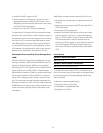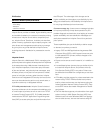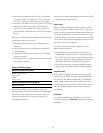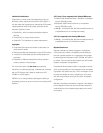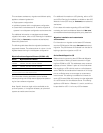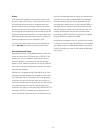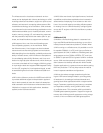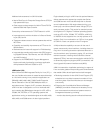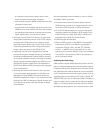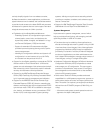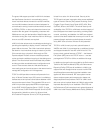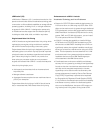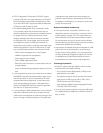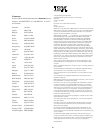85
z/VM Version 5 (V5)
z/VM Version 5 Release 1 (V5.1) continues the evolution of its
premier and world-class zSeries virtualization technology with
a new version to offer traditional capabilities to manage
zSeries
operating systems, including Linux, on a single mainframe
as guests of z/VM. z/VM V5.1 is designed to operate only
on zSeries servers that support the z/Architecture (64-bit)
including the z990, z890, z900, and z800 or equivalent.
Engine-based Value Unit Pricing
z/VM V5 introduces engine-based Value Unit pricing which
replaces the per-engine pricing model that is available
with z/VM V4 as well as providing a lower entry price.
Engine-based Value Unit pricing is designed to provide a
decreasing price curve which may help provide improved
price/performance as hardware capacities and workload
grow. Value Unit pricing for z/VM V5 can provide for a
lower price per processor engine as more processor
engines are licensed with z/VM V5.1 across the enterprise.
Value Unit pricing helps you to:
• Add capacity and workload with an incremental and
improved price
• Manage software costs better
• Aggregate licenses acquired across machines that are
part of your enterprise.
Engine-base Value Unit pricing of z/VM V5 should not be
tied, or associated with, MSU-based Value Unit pricing.
Enhancements in z/VM V5.1 include:
Virtualization Technology and Linux Enablement
• Support for SCSI FCP disks enable the deployment of a
Linux server farm on z/VM using only SCSI disks. SCSI
disks can be used as such by guests through dedicated
FCP subchannels, and are also supported as emulated
9336 Fixed-Block Architecture (FBA) devices for use by
guests, CMS, and CP. With this support, you can install,
IPL, and operate z/VM from SCSI disks.
• z/VM V5.1 includes the capability to install z/VM from
a DVD both to an ESS SCSI disk emulated as an FBA
device and to a 3390 DASD. Installing from a DVD can
signifi cantly reduce the required installation media and
allows you to install to a zSeries server using only SCSI
disks. This is expected to be most benefi cial in a z/VM
environment with Linux guests and without traditional
installation devices such as IBM TotalStorage tape
drives attached to the IBM zSeries server.
• Coordinated near-continuous availability and disaster
recovery for Linux guests by providing a new HyperSwap
function so that the virtual devices associated with one
real disk can be swapped transparently to another.
HyperSwap can be used to switch to secondary disk
storage subsystems mirrored by Peer-to-Peer Remote
Copy (PPRC). HyperSwap is planned to be exploited
by Geographically Dispersed Parallel Sysplex (GDPS)
3.1 to provide a coordinated near-continuous availability
and disaster recovery solution for distributed applica-
tions, such as WebSphere, that span z/OS images run-
ning natively and Linux guests running under z/VM.



